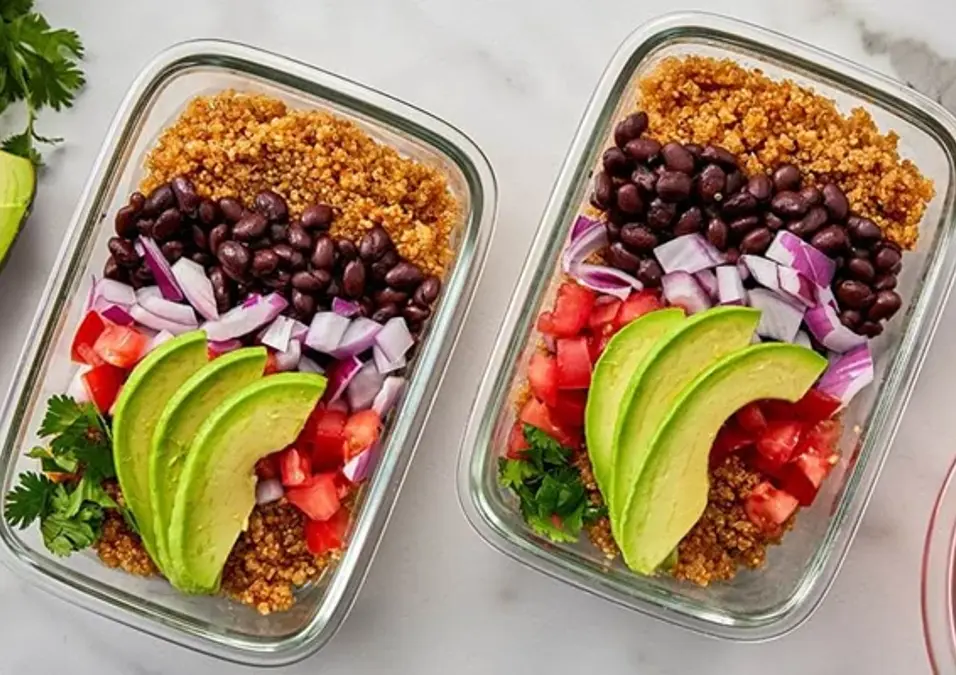Meal prep without breaking the bank

SIGN UP FOR YOUR FREE DAY PASS TODAY!
One of the most common issues facing bodybuilders, gym goers and athletes alike is how much they should be eating. People worry about it- with good reason. You will probably end up eating a lot if you’re serious about any kind of athletic endeavour. Caloric and protein intake will play a large role in allowing for your body to adapt to training stimulus, fat intake will keep you healthy and limber, and a vast amount of carbs will be needed to power you through your training, so nutrition plays a big part in your training routine. You can also use a calorie calculator to help plan your meal prep.
Let’s look at a typical powerlifter and what they might eat in a day. Typically, if they use a BMR calculator and adjust for their biometrics and activity levels, they will likely need to eat around 3,000-3,5000 calories per day. If they’re bulking- trying to put on a lot of mass quickly- it can be more than this.
Of these calories, around 200 grams- or 800 calories- will be in the form of protein. This will allow for strength adaptation and hypertrophy.
Now, anybody eyeing up the steak at their local butcher will tell you that that can be a very expensive lifestyle. 200 grams of good quality steak will really put a hole in your pocket. 200 grams of cheap chicken is still a lot and, over time, may break the bank.
Fat can be cheaper, but good quality fat, like nut butter, olive oil, avocado and so on can be pricey. Even carbs, a cheap staple, can cost a lot if you eat expensive vegetables.
However, this needn’t be the case. There is a way to do it on a budget. If you do it right, high calorie, high protein diets can be very affordable whilst retaining the level of nutritious value you want.
Today, we’re going to take a look at how to put together an athlete’s diet on a mere $200 per month (or less, if you get really good.) This will give you all the energy you need to train hard and all the protein you need to grow afterwards.
Stock up each week or two at the supermarket and prep your meals on a Sunday evening, freezing them for later use. Use the ingredients listed below to put together an array of foods and you will have your whole week sorted, with everything you need in it, for hardly any money at all.
Protein sources on a budget
Everything on this list will give you at least 30g of protein for under a dollar- $5 of chicken leg will give you 300g, far more than your daily need, as will $5 of peanut butter.
We’ve got them here in price order, starting with the most expensive:
- Tuna
- Cottage cheese
- Whole milk
- Black beans
- Eggs
- Baked beans
- Peanut butter
These are all easy foods to incorporate into your daily eating choices, and all will allow you to stay on budget whilst taking in the quantities of protein you need.
However, protein isn’t everything, of course. We’ve already seen that you also need good quality carbs and fats for a healthy, balanced diet that will fuel will your workouts and keep your recovery in check.
Where should you get these from?
Budget carbs
This is where it should get really cheap. Carbs have historically been used to fill you up for very little. This is what we’ll be doing with this list: everything on here will come in a less than 10p per 100 calories of carbs. Our powerlifter’s carb intake will be about 1,200 per day, meaning that they can spend less than a dollar per day on them.
Again, these are ordered with the most expensive first:
- Egg pasta
- Ramen noodles
- Regular pasta
- Potatoes
- Oats
- Rice
Budget fat sources
Fat will usually form the lowest quantity per grams in your macronutrient ratios (not necessarily in calories, however). It’s normal enough for a powerlifter like our one above to take in about 900-1,000 calories per day from fat, meaning that they will end up eating a little over 100 grams.
Butter and oil variants will be quite cheap, whilst nuts like almonds and walnuts can get pretty expensive (around 50c. per 100 calories.)
A mixture will be best. Take a little from the pricey end and a lot from the cheap end. This way you should be able to end up spending under two dollars per day on fats (a little more if you ever treat yourself to a bag of nuts or some fresh avocado.)
For the best budget fats, starting with the most expensive, go for:
- Walnuts
- Almonds
- Cream
- Mixed seeds
- Peanuts
- Butter
- Olive oil
- Buttery spread (margarine, buttermilk derivatives etc.)
- Sunflower and rapeseed oil
This should cover the vast bulk of your nutritional needs. It will certainly cover most of your macro-nutritional needs with regards your meal prep on a budget. You will most likely want to supplement as well, however.
First of all, protein intake becomes a lot cheaper and a lot more manageable with protein powder. Go for whey isolate if you can. If not, soy, pea and collagen protein powders will also work. If you’re trying to save money, try whey concentrate. Combine with BCAAs (branch chain amino acids) for all the protein cover you will ever need.
In addition, go for a generic, store-brand multivitamin (because it’s cheap and will cover every base) along with something for your joints (glucosamine or omega 3).
Take these daily, prep your meals weekly, and you’ll be good to go without being completely broke.
GET YOUR FREE TRIAL TODAY














































































